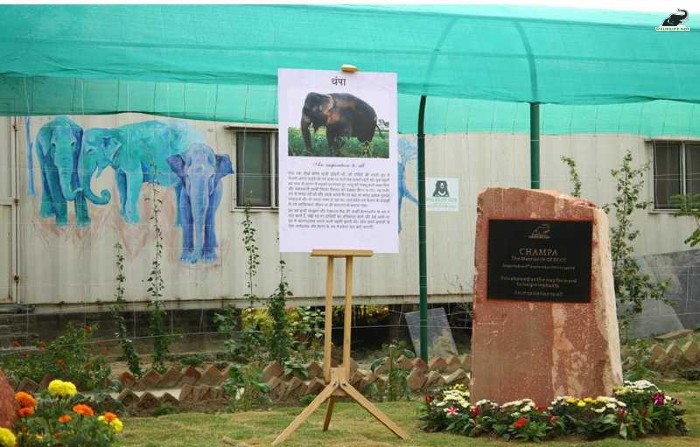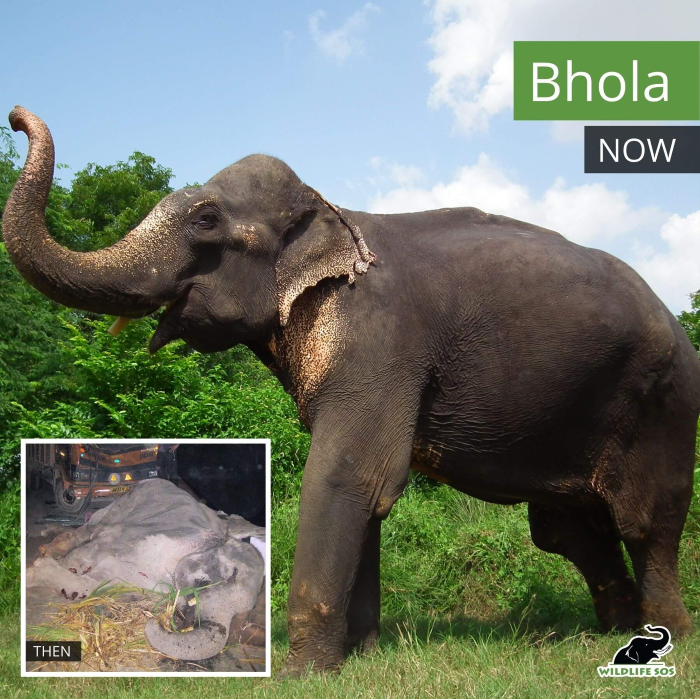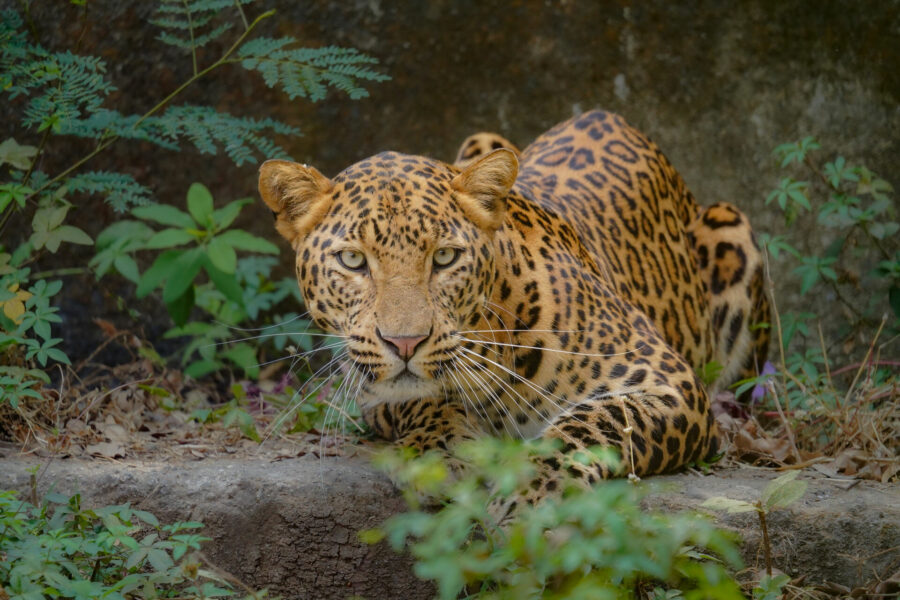Exploit. Torture. Abscess. Infection. Starvation. Wound. Pus. Osteoarthritis. Broken limb. Torn footpad. Frail. Ankylosis. Necrosis. Cruelty. Captive. Malnourished. Cripple. Ill. Sick. Abuse. Truck collision. Highway accident. Broken bone. Scars. Immense pain. Multiple injuries. Violence. Bullhook. Mob. Trauma. Spiked chains. Illegal ownership. Begging elephant. Lack of strength. Weak. Wedding elephant. Temple elephant. Emaciated. Battered. Bruised. Distress.
Confused by the random presentation of these phrases? There is a pattern that can be found here, though. All these words are common across the stories of all our rescued elephants. And it is visibly clear how each and every one of these words has a negative connotation attached to it. We may use words such as ‘owner’ or ‘mahout’ to describe who the masters of elephants were, but this veil won’t hide the fact that it is, in fact, one species that perpetrated the violence against these gentle giants: Homo sapiens.

Attentive to this sorry situation, Wildlife SOS took the decision to tackle the elephant captivity plague that exists, and the oppression these animals have to face as a result of it.
Our journey with elephants began in 2007 with a very special individual named Champa, a female pachyderm, when we spotted her on the highway between Delhi and Agra. When the co-founders would travel back and forth from the bear rescue centre, they would stop to give her treats. That is when they noticed she bore many injuries and abscesses, and started to provide her with veterinary care. “The amazing thing about Champa was that she was very fond of people and we could really relate to her,” says Geeta Seshamani, Co-founder and Secretary of Wildlife SOS.
Champa had a horrible abscess on the front right leg. It was worrying to see that, and our team wanted to immediately fix it. “We did not care and initially got into a fight with the owner who continued to use her for elephant rides and begging, despite knowing she was so sick,” recalls Co-founder and CEO Kartick Satyanarayan.

She was being used to give rides to tourists, attend religious ceremonies and marriage functions, and for begging. Champa’s owner was giving her tobacco to help her “cope with the pain”, and this was ruining her liver. “He would never have agreed to give us the elephant except one day in 2008, she went down completely and the owner realised he couldn’t earn from her anymore. The abscess was so huge that we actually pushed out a bucket of pus from that injury,” Geeta informs.
It was a traumatic situation and we had to send a veterinarian several times, often one that tended to equines, or any vet we could get our hands on to provide aid to Champa. “Champa started this whole saga of where we are standing today – the Elephant Conservation and Care Centre. This has been a legacy left behind by her. She created this for us and she taught us how elephants suffered,” expresses Kartick.

One of the dismal things that Champa opened our eyes to was how elephants in captivity live in isolation. They are never allowed to meet other pachyderms, which indicates the isolation and trauma they experience. After Champa, the second elephant we rescued was Bhola, an elderly bull. When Bhola arrived at the haven we had created for Champa, he began to trumpet, and Champa began to respond. “That got us worried about what was going to happen and whether they would get along or not. But when they got close, the manner in which they greeted each other looked as if they knew each other for a long time,” says Geeta.
We received a call at 3 am from Delhi saying that an elephant was down and collapsed on the highway after a vehicle accident, and probably dead. One of the co-founders actually checked his eyelid with a flashlight and saw that he blinked. He exclaimed to himself, “dammit he is alive!” They blocked the traffic and got a crane. It was Bhola, and he actually stood up with the crane’s help. A few mobile veterinarians treated him for several weeks before he was fit enough to be rescued and transported to the Wildlife SOS facility.

“It was a hostile situation because the owners hid Bhola. That was when we were able to tap into our informers’ network, who told us where Bhola was hidden. Then we resorted to the forest department and police’s help to rescue him,” Kartick remembers.
Over the years, Wildlife SOS has rescued over 50 elephants from extremely stressful conditions such as performing in circuses, giving tourist rides, begging, accidents and from temples, and brought them to its more than 10 sanctuaries. Wildlife SOS is the first organisation to establish and run India’s first and only elephant hospital, which was set up in 2018. Here, close to 20 rescued elephants have received focussed treatments. Wildlife SOS also has India’s first elephant ambulance to transport and care for injured elephants.
The organisation has also forayed into the space of sending mobile veterinary teams to provide on-site treatment to elephants, wild or captive, with urgent medical needs. By doing this, it has extended its work towards elephant conservation beyond the boundaries of its rescue facilities.

Strides were also made in human-elephant conflict mitigation through Early Warning Systems, radio-collaring elephants, tracking their movements, and educating human beings about elephant behaviour and their travel pathways to promote coexistence. In Chhattisgarh, where a conflict mitigation project is undergoing, the results have shown how well our work has fared. In 2019, the number of crop damage cases from elephant raids was nearly 4,800. But in 2020, a few years after the successful radio-collaring of the herd’s matriarch and the setting up of the Early Warning Alert System, the numbers dipped to a little over 1,500 cases. That is nearly a 65% drop in the number of cases.
Before the project started, 90 human mortalities had been reported. But now, with the application of EWS, human encounters with elephants have been significantly curtailed. One of the study areas in the state, Mahasamund, which saw 10 human mortalities in 2021, did not experience a single case in 2022.
Starting with a single elephant’s rescue introduced a diverse range of work in elephant conservation to us. What began with Champa initiated a domino effect of rescues, rehabilitation and attentive care for elephants. The elephant sanctuaries in Haryana and Mathura, and India’s first elephant hospital became a symbol of…
Hope. Resilience. Recovery. Courage. Effort. Greenery. Freedom. Happiness. Joy. Home. Nutrition. Care. Caregivers. Relief. Welfare. Delight. Feast. Celebration. Rescue anniversary. Warmth. Healing. Treats. Comfort. Ease. Support. Love. Socialisation. Bond. Trio. Friendship. Strength. Baths. Walks. Enthusiasm. Liveliness. Enjoyment. Well-being. Safety.

These words indicate the reality of rescued elephants that were earlier suffering from all we mentioned right at the beginning. Read this paragraph, and then read the first paragraph again. You will be able to see how starkly different they are from each other. The words related to their past stood for all things negative. Now, under Wildlife SOS’s dedicated care, a positive change has been brought into their lives. However, crossing the path between the two sets of terms has neither been ordinary, nor easy. But it is symbolic of what a collective of concerned people have achieved to liberate the largest land animal on the planet.
The journey has been meaningful till now, however the taste of victory will be sweetest only when the last of these gentle giants is freed from cruel captivity.





